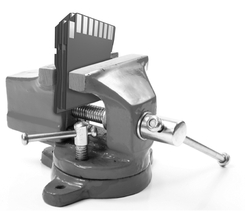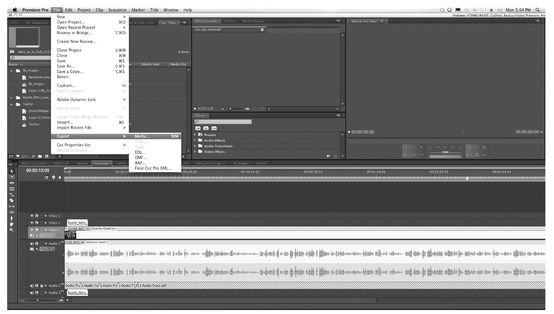65
Compression Software for Web Video
Andrew Burke

Figure 65-1
Web video is everywhere, playing on laptops, through video game consoles, in digital magazines on tablet computers, and even on TVs and mobile phones.
There are many Web enabled devices (electronics which connect to the internet) that produce video and have made quite an impact on our everyday lives. All this Web video comes from somewhere, but most camcorders typically don’t record video fit for immediate viewing on the Web. Herein lies the challenge: how to get our video playing on the Web, and to make sure it looks its best! Some tweaking to the video is needed; our video must be compressed for the Web.
Video compression is needed to change our large video files into smaller video files so that they can be shared more easily and viewed online. Luckily for us, there’s a whole world of video compression software to get our video ready for the Web. Basic video editing software like Windows Live Movie Maker, usually includes an AVI compressor option for the Web. Professional video editing software like Adobe Premiere Pro CS5, gives us more advanced, detailed compression options. There are even stand-alone compression software tools like Sorenson’s Squeeze, Apple’s Compressor 4 and MPEG Streamclip that handle video compression without the need for any other software. So whether you want your video looking its best on YouTube, or playing loud and proud on an iPad, video compression software makes it happen.
What is the Best Compression Format for you?
It’s hard to write a video compression comparison because everyone’s needs will differ. However, whether it’s the best video compression software you’re looking for or the best video format for YouTube, we can get started compressing right away. Most desktop and laptop computers actually ship with video compression software built-in. On the Mac side, this means Apple iMovie, which comes standard on every new computer (or as a $15 download from the App Store). On the PC side, it’s Movie Maker, which you have to download, but it’s free. Both of these offer preset options that produce good-looking Web video. iMovie is technically a video editing application, so it does much more than compress video for the Web. The software includes many basic compression features under its share menu, which gives you options to compress and upload to several online social networks like YouTube, Vimeo and Facebook. Since iMovie accepts video from most types of camcorders and point-and-shoot cameras, we think it’s a no-brainer for your first Web video.
On the PC side, you can download Movie Maker free on most computers. Like iMovie, Movie Maker is a basic video editor that includes a handful of compression features for the Web. Movie Maker accepts video from a variety of camcorders and users can make online

Figure 65-2 Rather than compress your video and burn it to DVD, iMovie makes it easy to share to various social networks by using preset formats for each type of network.
video compression for many outlets including email, YouTube, Facebook and to Windows Live SkyDrive (Microsoft’s online storage service).
A third basic tool to use for compression is QuickTime player. This small application for both the PC and Mac offers video compression features in a simple package. Compression options for the Web include presets for YouTube, Vimeo, Flickr and Facebook. Custom compression options are available, too. Both Movie Maker and iMovie use presets to compress for the Web. If we want more control (and even better looking video), we’ll want to look past these presets, to some professional tools and video compression techniques.
The Big Time: Specialized Compression Software
If we want to make the very best Web video, and attract the largest viewing audience, we’ll have to use some more advanced tools. These tools allow us to compress HD video for more than just social networks—think Web video streaming from your website or onto a tablet computer.
Custom settings like bit rate, resolution, format and adaptive streaming are features to look for. These settings allow for fine control of video quality, but it takes time to master. With Web video now playing in glorious 1080p HD resolution, the need for exceptional video compression is greater than ever. HD video has a lot more pixels to compress than standard video. So the demands on our video compression software are higher. You may also want to compress many video clips all at once. And what about all the Web enabled devices? They each require video with slightly different compression. It’s easy getting so many pixels to look good online. We just need the right tools.
Adobe Premiere Pro and Media Encoder
Adobe Premiere Pro CS5.5 is a full-featured video editor with many customizable

Figure 65-3 Adobe Premiere Pro preserves the format of your video while you work so that it is faster when it comes to compressing.
compression options, and is available for both Mac and PC. Since Premiere Pro CS5.5 ($800) allows video to be edited natively, or in an original format, compression times are shortened. Pair that with special CUDA hardware acceleration (certain video graphics cards which speed up compression), and you have a very fast tool. Premiere Pro CS5.5 works seamlessly with its included partner app, Adobe Media Encoder. This partner app allows for even greater control over compression settings, and offers adjustable setting for compressing Web video for mobile devices. And since these applications run at 64-bit (basic compression software usually runs at only 32-bit), adding more RAM to our computer helps speed up each compression task.
“Once I’m done with my edit in Premiere”, says Ryan Brown owner of Downtown Brown Entertainment, “I click File -> Export Media, and Adobe Media Encoder launches.” Ryan modifies Adobe’s YouTube settings to 1920 × 1080 resolution and 23.976 frames-per-second, for an even better video. Taking full advantage of Premiere Pro CS5.5, Ryan compresses video for the Web using an Apple MacPro 8-core with 32GB of RAM, and an NVIDIA Quadro FX 4800 CUDA-supported graphics card.
Apple Final Cut Pro and Compressor
Final Cut Pro X is another top-quality video editor that includes a host of options to compress for the Web, but is only available on the Mac. Final Cut Pro X ($300 download from the Apple Store) offers similar publishing features to iMovie, such as a direct-to-YouTube setting, though Final Cut Pro compresses much faster using its 64-bit capabilities (iMovie is 32-bit). Other features include optimized compression for all of Apple’s Web enabled devices: iPhone, iPod touch, Apple TV and the iPad.
Another standout feature is compressing for HTTP live streaming. This gives us the ability to compress multiple versions of the same video at once, for playback that matches the viewer’s internet speed. For finer control, Final Cut Pro X pairs with its partner app, Compressor 4 ($50 download from the Apple Store). We can also keep editing our video in Final Cut Pro while our Compressor 4 is compressing Web video, since Compressor is a separate, stand-alone application.
Sorenson Squeeze
If we want a bundle of the top compression features without being affiliated with

Figure 65-4 Premiere Pro CS5.5 is well set to work in conjunction with Media Encoder.
a particular video editing app, Sorenson’s Squeeze 8 ($600) fits the bill. Squeeze 8 is a full-featured stand-alone application for making Web video, featuring adaptive bit rate compression for mobile devices, batch processing (an easy way to make many different compressions), and support for the latest Web video formats such as WebM. The Sorenson community also highlights custom settings, like this one for compressing to the Web enabled Xbox 360 gaming console: Xbox 360 1080p  Codec = H.264, Data Rate = 3000 kbps, Frame Size = 1280 × 720, Method = 2-Pass VBR. That’s quite a mouthful! But to make the best Web video, we’ll know these settings eventually.
Close
It’s more important than ever to have great looking video on the Web. This is made possible by using the right video compression software and practicing sound techniques. If your needs are basic, chances are you already have the tools to compress a video for the Web. If you’re a stickler for details, prepare your wallet and your calendar (to learn top-notch software, naturally). There are still many types of video to navigate, with many devices like the Android video format playing Web video (and growing). The importance of compressing video for the Web has never been greater!


